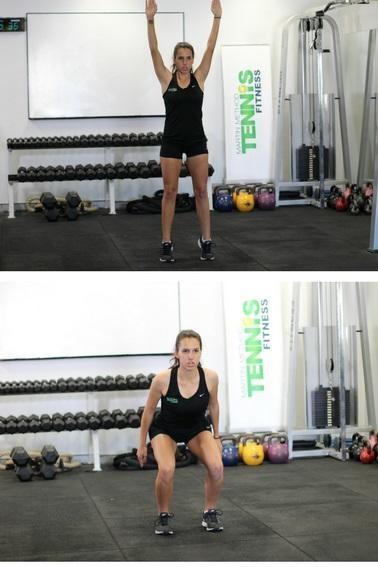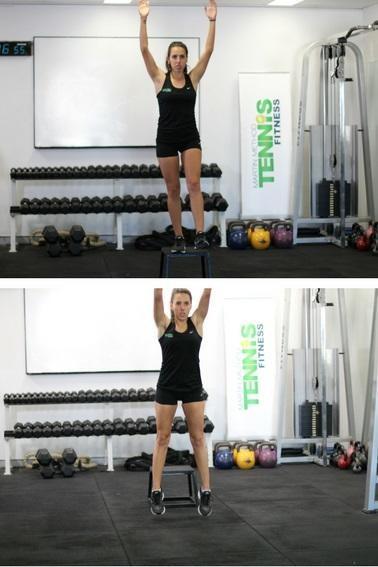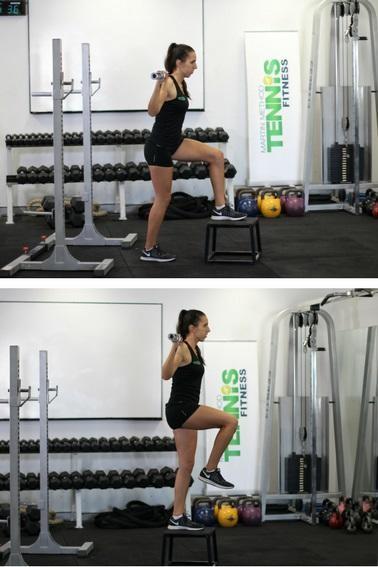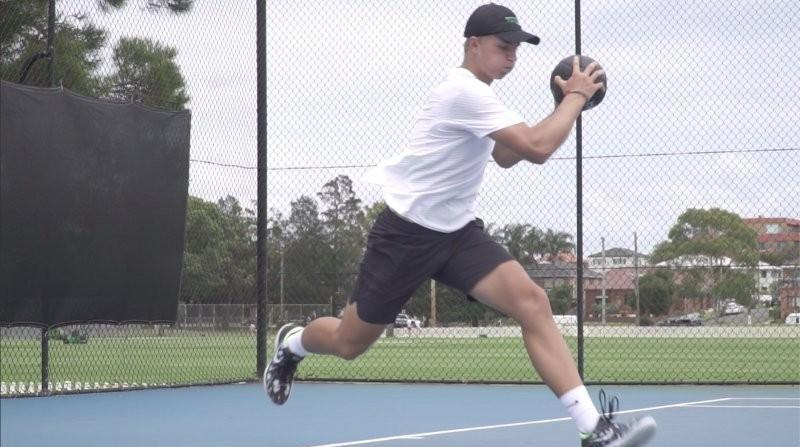Tennis Power
After traveling on the Professional Tennis circuit for 15 years and training many junior tennis players we have seen the same problem over and over again when players train for tennis power.
Every player wants to improve their power, so in this article we are going to address the common problems players we have seen first hand, when training for tennis power and then we are going to give you a solution and some guidelines to follow when training for tennis power.
At Tennis Fitness, we have found the most successful ways to train athletes for tennis power, is to implement EFFECTIVE PROGRESSIONS.
With every program we design, we ask the all-important questions;
“Why are we doing this tennis exercise and what are we trying to achieve”
The majority of players, are not training correctly for power gains (force expression) they are wasting their time and the programs aren’t working for them. This is happening because they haven’t been able to progress their exercises, sets, repetitions and rest periods effectively.
Here are some common problems we have found;
1. Immediate Results - Players want immediate power results and don’t take the time to build a good strength foundation that will dramatically help with their power output. You cannot expect to generate a faster powerful serve, if you don’t have a solid strength foundation.
2. Correct Technique - Players start with force expression (jumping) exercises without learning how to force absorb (land) It’s imperative that players learn how to absorb force, before progressing to force expression. Without learning how to land and load correctly the body will eventually get injured.
3. Too Advanced - Players performing power exercises which are way too advanced for them. They start with advanced power exercises e.g. single leg jump before mastering a basic power exercise e.g. two leg jumps. You need to be careful where you get your information from. Think basic and build from there.
4. Purpose or Structure - Players don’t have a purpose or effective structure to their training. They find some fab new plyometric exercise on you tube and do them whenever without any purpose or plan. There is no building or progressive plan with their exercises each week. This can spell danger.
5. Periodised Plan - Players aren’t allowing their bodies to come down from a training peak. Players must realise you need to establish when you want to peak, train correctly until you peak and then rest after the peak period. It is hard to peak for longer than a few weeks. Doing the same high intensity exercises and programs without resting, will cause injuries and burn out.
So we have addressed the common problems when it comes to training for Tennis Power, now we want to give you a solution for these problems. To get it right you need to consider a few important steps -
Step 1 - Build strength for tennis
Firstly, one of the biggest mistakes is not having a good strength foundation. Focus on building strength through the major muscle groups prior to performing any power orientated exercises. This is especially important for young athletes. If a young player cannot squat under body weight, how can you expect them to do anything dynamically with good form! They won’t have the capacity to absorb force under a good bio mechanical chain of movement.

Step 2 - Learn how to absorb force
Force absorption is when a player lands or absorbs force. Most players focus on power and acceleration. Research shows us that having the ability to absorb force through the correct chain of movement, gives athletes the ability to have better movement preparation, prevent injuries and have the capacity to be more dynamic. This is a vital area to train, to allow the body to adapt and be better prepared for absorbing force when on court.
Step 3 - Force expression
Force expression is when a player produces force e.g. takes off for a drop shot hits a serve or jumps. Force expression is generating initial power or acceleration, creating that first step quickness and generating dynamic groundstrokes. It’s important to remember if you are unable to force absorb, you will be limiting your ability to express force.


Step 4 - Force absorption into force expression
Once you have established good form with both force absorption and force expression, we then can progress to a combination of both force absorption into force expression. An example of this is when you hit a wide forehand/backhand and need to decelerate (force absorb), make a shot and then accelerate (force express) out of the shot.
Step 5 - Uni- lateral Power
Once you have established a good solid dynamic power structure we move into uni- lateral power. This where we see a lot of athletes go wrong. Trying to get players to perform unilateral power without establishing a solid bi lateral power base. Unilateral power is when a player focuses on specific exercises and drills that are only single arm or single leg exercises. Implementing uni-lateral power in your program, enables the player to become more effective and physically confident on court, whilst leaning or loading one side of the body or a specific joint. Having the ability to dynamically push off on one leg or hit a wide stretched forehand with power is what you need to do as a high-end athlete. Because tennis is a unilateral sport it is very important that we train this area. We find if your power program is only performing bilateral exercises, your dominant arm will tend to take more of the load (in some cases 60% load dominant side - 40% load non-dominant side e.g in a bench press), causing problems long term. If this is the case it is inevitable that the dominate side will get stronger and the less dominate side will become weaker. This will possibly lead to muscle imbalances.


Get Your FREE Tennis
Power Program
Want more power on your serve and groundstrokes try these exercises.

